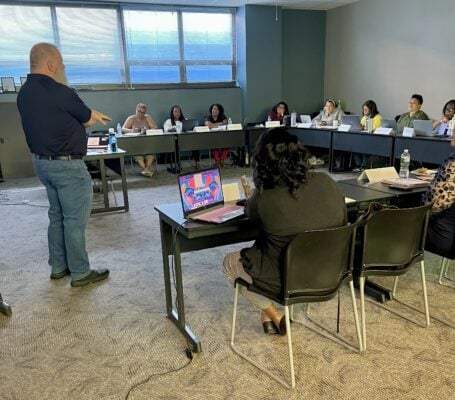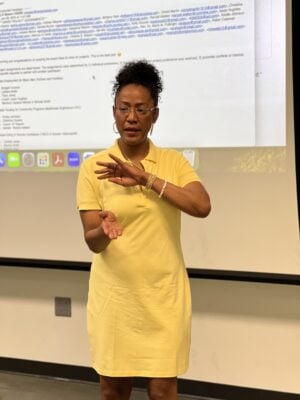The term “equity” has been used with increasing frequency across various spaces, yet it is often misapplied, misunderstood or even weaponized.
In some instances, its use has even been deemed illegal. Unfortunately, we find ourselves in strange times, looking around corners before cautiously saying ‘equity’ out loud. According to Webster’s Dictionary, equity is defined as fairness or justice in the way people are treated.
If you’re reading this article, we can likely agree that challenges related to fairness and justice are real, the barriers are significant, progress is too slow and trust is easily broken. Still, even in the current political climate, it is possible to address some of the equity challenges that affect all communities. Boldly moving forward requires thoughtful solutions grounded in reliable methods and shared blueprints that diverse stakeholders can rally around.
Enter Six Sigma.
Now, before you stop reading — thinking Six Sigma is just for engineers in factories with charts and jargon, let’s pause. Yes, Six Sigma started in manufacturing. But it’s not about widgets. It’s about solving problems. It’s a framework — a structured, repeatable process to reduce errors, improve outcomes and create measurable success. It can be intimidating because it sounds technical. However, the truth is that it’s more practical than academic. And when it’s applied with intention, people can do something radical: it can make equity work.

Bias is everywhere — So let’s build a system that accounts for it
There is a claim circulating that humans exhibit more than 188 cognitive biases. Whether that number is precise or not, the message is clear: our brains are wired to take shortcuts, to lean on habit, fear, familiarity and assumptions. That means we bring biases into every decision we make — whether it’s who we hire, whose voice we hear, how we interpret data or how we design policies.
The hard truth is that we cannot “train” bias out of people, but we can design systems that reduce its power. What we need is not a perfect heart but a solid process — a way to identify where bias occurs and build new paths around it. That’s where Six Sigma comes in.
Six Sigma for equity: It’s not a theory. It’s a blueprint.
The core of Six Sigma is the DMAIC method: define, measure, analyze, improve and control. It’s a five-step blueprint for solving complex problems in a clear, effective way. And it turns out, equity challenges are complex problems.
Let’s break it down:
- Define: What’s the equity challenge? Vague goals like “improve inclusion” don’t help. But when we define a clear problem — say, “Black women are 40% less likely to be promoted to manager in this agency” — we have something to solve.
- Measure: We gather data and ask questions. What does the promotion process look like today? Is 40% even the correct number? Who is applying? Who is being selected?
Without measuring, equity is just a feeling. With data, it becomes a decision.
- Analyze: This is where we explore the why and ask more questions. Is it access to mentors? Lack of visibility? No formally documented promotion process?
At this step, we look beyond symptoms and uncover root causes based on the data we gathered.
- Improve: Now we act by designing and testing new solutions. Maybe it’s a revised evaluation form. Maybe it’s actually documenting and publishing the promotion process so it’s accessible. Perhaps it’s manager accountability.
We try, we track, we tweak.
- Control: Once we see what works, we lock it in. We update the policy, train the team and monitor the data.
This is how change sticks.
This blueprint doesn’t erase bias. But it builds a road around it—one paved with clarity, accountability and results.

Examples of Six Sigma applied to equity
We’re pleased to share that we’ve been utilizing the Six Sigma DMAIC framework to address real problems in our city for over four years, and the results speak for themselves. Across sectors and communities, we’ve led eighteen projects that show measurable progress in closing gaps and creating new opportunities.
In our first year, we addressed the issue of the underrepresentation of Black individuals in the tech sector. Many of the participants in this project had never imagined themselves working in tech. But after applying the DMAIC method, 100% of those participants applied for a tech-related position. We didn’t promise jobs. That’s not our role. What we did do was create space for learning, encouragement, a framework for determining when to apply for a job and action. The framework helped us move people from doubt to direction.
Fast-forward to year four. Another project focused on increasing employment opportunities for men in a local program. The program uses the ABC employment model: A job, Better job, Career. With DMAIC, we worked alongside agency leaders and found that the most significant opportunity wasn’t in “fixing the men.” It was in changing how the agency built relationships with employers.
Instead of zeroing in on criminal records, we helped shift the lens to systems and support. The DMAIC process revealed a systems-level shift: the agency’s approach to partnering with employers needed to be standardized, strengthened, and streamlined. By improving how these relationships were built and maintained, the agency could better align its efforts with both its core mission and the real needs of its clients. Stronger, smarter partnerships aren’t just good strategies; they open doors. For these clients, smarter partnerships do not guarantee a job, nor do they give an unfair advantage; rather, they provide more pathways to employment and long-term stability.
These examples aren’t theory; they’re evidence. They show how disciplined problem-solving can drive equity (fairness or justice in the way people are treated), build confidence, and shift outcomes. We don’t need more slogans, meetings, platforms, or arguments. We need frameworks that work. We must think critically, apply proven tools and remain committed to the challenging yet hopeful work of change.

Why process thinking is the equity mindset we need now
We are living in a time when words are being weaponized, and DEI programs are being challenged. Leaders are unsure what to say or if they can say anything at all. But this isn’t the time to retreat. It’s time to pivot.
The pivot is this: move from performative gestures to performance-based solutions.
Equity isn’t just about passion. It’s about process. Six Sigma DMAIC focuses on processes.
Process thinking gives us a bias worth having — a bias toward critical thinking that leads to action. It means we stop guessing and start testing. It means we stop assuming and start analyzing. It means we don’t just say we care — we show it in our policies, systems and outcomes.
A call to action: Equity deserves a framework
If we want to solve equity challenges, we must stop treating them like mysteries. They are problems. Complex ones, yes … but solvable. And problems are best solved with a critical thinking framework.
Six Sigma is not the only way. But it’s one proven blueprint. It provides a disciplined and repeatable path. It moves us from chaos to clarity.
So here’s the challenge: The next time you’re facing an equity issue, like low retention, slow promotions, or high unemployment, don’t just talk about it or run from it because someone calls it ‘illegal.’ As a team, start by clearly understanding the gap you’re aiming to close; define it together and make sure everyone sees the same target.
Next, verify the real barriers to fairness, not just the surface issues. Use diverse voices and data to uncover what’s truly blocking progress. Then, as a team, test new ways to break through those barriers, knowing that equity work often requires bold, creative thinking. Learn what worked, what didn’t, and why. Continue refining your approach and repeat the process until you achieve meaningful, measurable progress.
This work can’t be done the old way
Let’s be honest. We’ve spent decades doing equity work based on good intentions, powerful stories, and raw emotion. That mattered. That still matters. But now is the time to bring more frameworks than programs. To scale what works. And we can do this in the current political environment with low risk.
What’s needed now is courageous and thoughtful implementation. We must do more than try, train, and program. We must solve.
This moment in time will bring out the best in equity work … if we let it.
Not by abandoning heart but by adding rigor. Not by changing our values but by upgrading our methods. Equity deserves strategy. It deserves systems. It deserves our best critical thinking.
So, let’s stop being afraid of Six Sigma and start seeing it for what it is: a framework for progress. A framework for equity.
The Six Sigma Collective
Joy E. Mason, Six Sigma Black Belt SixSigmaIndy
Brion Hurley, Lean Six Sigma Master Black Belt- Business Performance Improvement
Tim Mccarthy, Lean Six Sigma Master Black Belt, MCI & Co.





